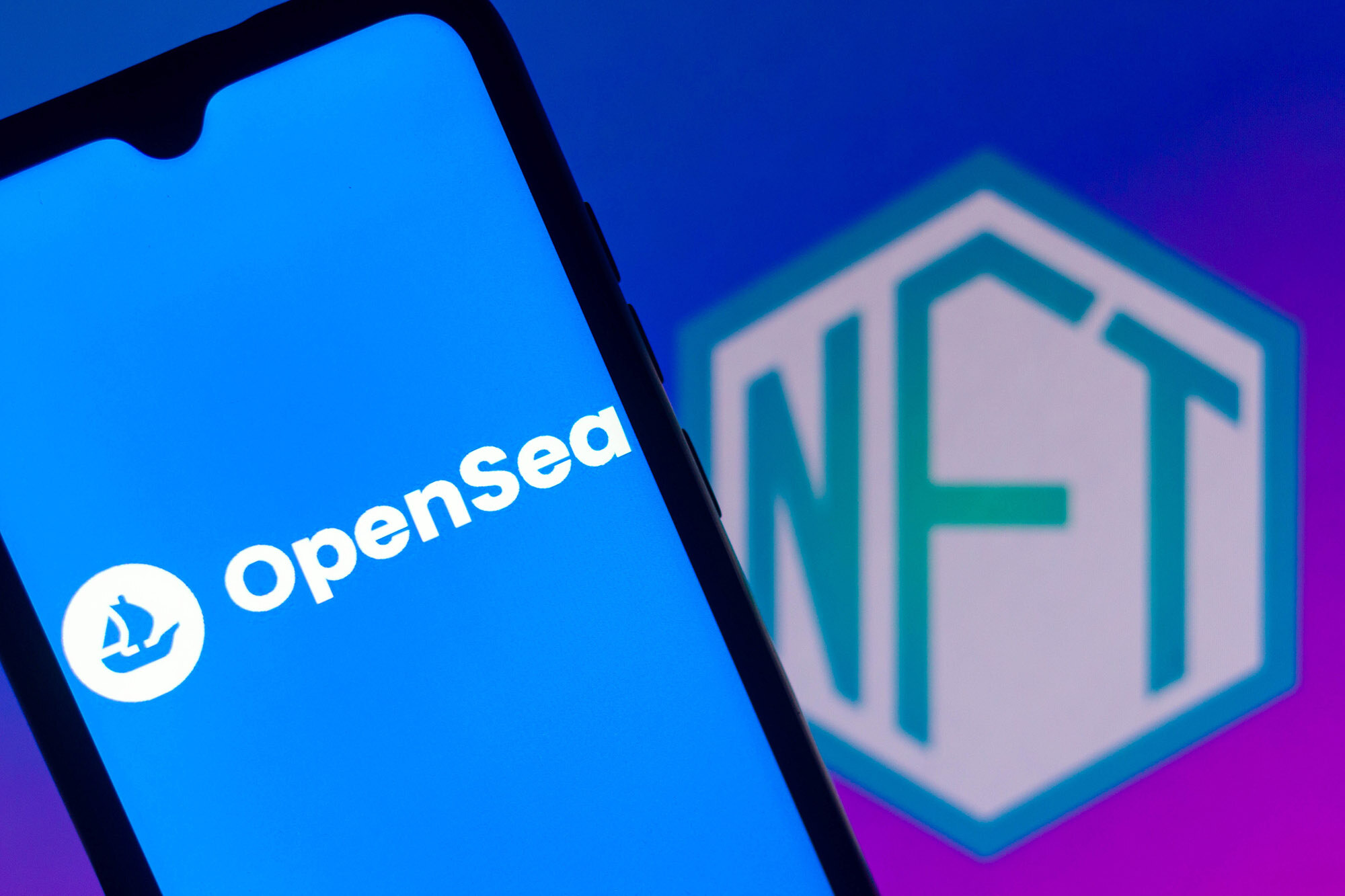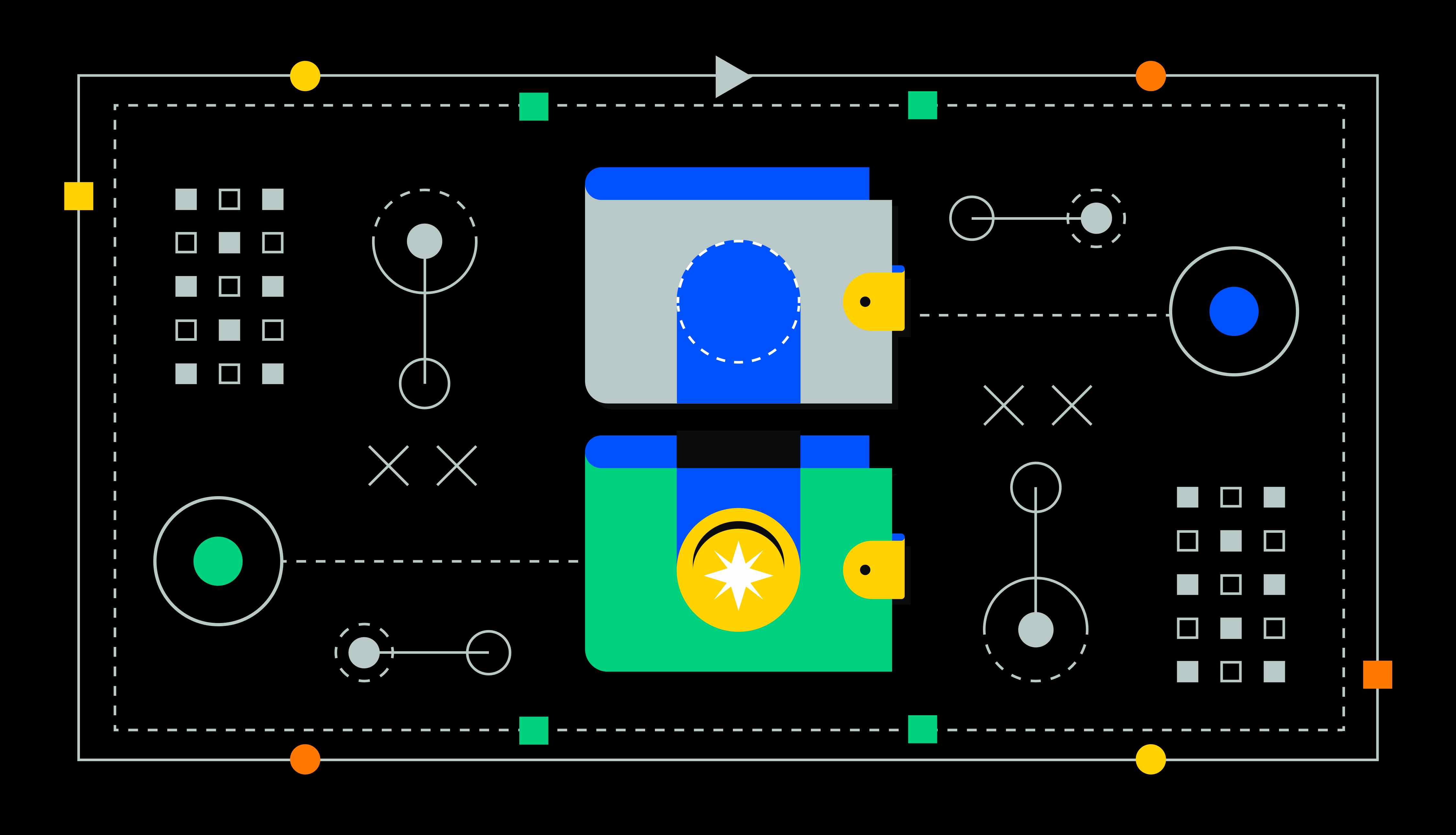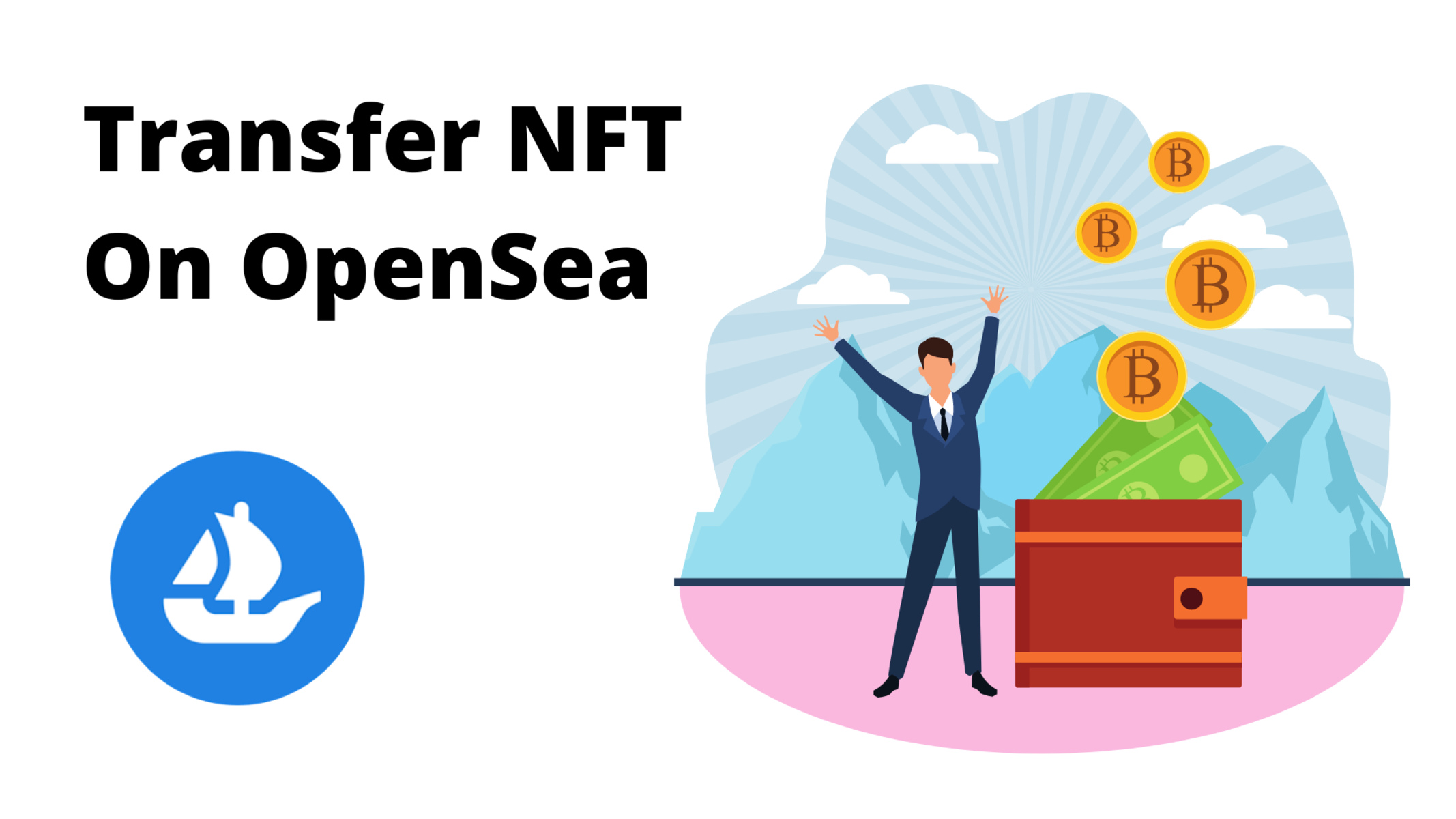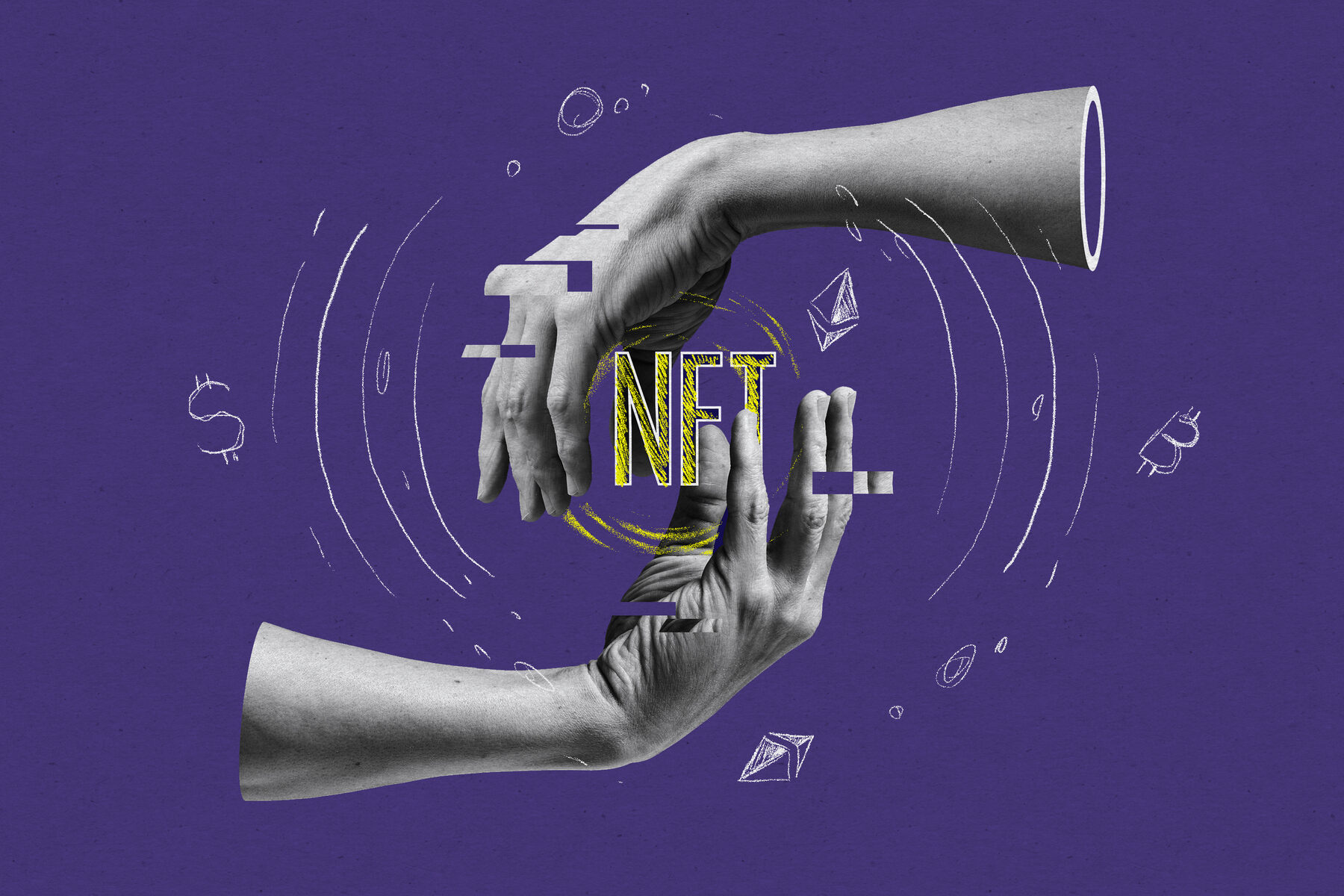Introduction
Welcome to the exciting world of NFTs! Non-Fungible Tokens, or NFTs, have been making headlines in recent years as a digital asset that can be bought, sold, and owned. NFTs have become a popular way for artists, creators, and collectors to showcase and trade their digital works of art, music, videos, and more.
With the growing interest in NFTs, platforms like Coinbase have emerged as a trusted marketplace for buying and selling these unique digital assets. Coinbase, one of the leading cryptocurrency exchanges, has expanded its offerings to include a wide range of NFTs, allowing users to explore and invest in this innovative digital space.
In this guide, we will walk you through the process of buying NFTs on Coinbase, from creating an account to purchasing and storing your NFTs securely. Whether you are an artist looking to sell your creations, a collector on the hunt for unique digital items, or simply curious about NFTs, this article will provide you with the necessary information to navigate the world of NFTs on Coinbase.
Before we dive into the specifics, let’s take a moment to understand what exactly an NFT is and how it differs from other digital assets.
What is an NFT?
In the digital world, NFTs are a form of cryptocurrency that represent ownership or proof of authenticity for a specific digital asset. Unlike cryptocurrencies such as Bitcoin or Ethereum, which are fungible and can be exchanged on a one-to-one basis, NFTs are unique and indivisible.
Think of an NFT as a certificate of ownership for a digital asset, similar to owning a rare piece of artwork or a collectible in the physical world. While anyone can view or download a digital file, owning the corresponding NFT gives you verifiable proof of ownership and the ability to transfer, sell, or trade the asset.
One of the defining characteristics of NFTs is their use of blockchain technology. NFTs are typically built on blockchain platforms like Ethereum, which provide a decentralized and transparent system for recording ownership and transaction history. This ensures the uniqueness, provenance, and immutability of each NFT, making it an ideal solution for digital artists and collectors.
Artworks, music albums, videos, virtual real estate, and even tweets can be turned into NFTs. The value of an NFT is determined by various factors, including the scarcity, demand, and perceived cultural or artistic value of the underlying asset.
While NFTs have gained popularity in the art world, they also have implications beyond just digital artworks. NFTs can enable creators and developers to monetize their digital creations directly, without relying on traditional gatekeepers or intermediaries. This opens up new possibilities for content creators, musicians, and even gamers to earn revenue and engage with their fans in unique ways.
Now that we have a better understanding of what NFTs are, let’s explore how to get started with buying NFTs on Coinbase.
How to Create a Coinbase Account
To begin your journey into the world of NFTs on Coinbase, the first step is to create an account. Follow these simple steps to get started:
- Visit the Coinbase website or download the Coinbase mobile app from the App Store or Google Play Store.
- Click on the “Sign Up” or “Get Started” button to begin the account creation process.
- Provide your email address and create a strong, unique password for your account.
- Confirm your email address by clicking on the verification link sent to your inbox.
- Once your email is verified, you will be prompted to set up two-factor authentication (2FA) for enhanced security. Choose between SMS-based authentication or a third-party authenticator app.
- Complete the identity verification process by providing your personal information, including your full name, date of birth, and residential address. Coinbase is required by law to verify the identity of its users.
- Once your identity is verified, you’re ready to start exploring and buying NFTs on Coinbase.
It’s important to note that Coinbase operates in compliance with Know Your Customer (KYC) and Anti-Money Laundering (AML) regulations, which require user verification. This ensures the security and integrity of the platform.
Creating a Coinbase account is free, and you can upgrade to a Coinbase Pro account if you prefer more advanced trading features. Coinbase Pro offers lower fees and more robust trading capabilities for experienced users.
Now that you have successfully created a Coinbase account, the next step is to set up your digital wallet.
Setting up a Wallet on Coinbase
Once you have created a Coinbase account, the next step is to set up your digital wallet. A digital wallet is a secure online storage space where you can store, send, and receive your NFTs. Follow these steps to set up your wallet on Coinbase:
- Log in to your Coinbase account using your email address and password.
- Click on the “Wallets” tab in the top navigation bar.
- Choose the cryptocurrency wallet that you want to use for your NFT transactions. Coinbase supports various cryptocurrencies, including Ethereum (ETH), which is commonly used for NFT transactions.
- Click on the “Create New Wallet” button to generate a new wallet address for your chosen cryptocurrency.
- Once your wallet is created, you will be provided with a unique wallet address. This address serves as the destination for your NFTs when you purchase or receive them.
- Make sure to copy and securely store your wallet address. It’s important to keep your wallet address confidential and only share it with trusted parties when required.
It’s worth noting that Coinbase also offers a feature called Coinbase Wallet, which is a standalone mobile app that allows you to have full control over your private keys and manage your own digital assets. Coinbase Wallet supports NFTs and provides a more decentralized and self-custodial solution for storing and managing your NFT collections.
With your wallet set up, you are now ready to explore the world of NFT marketplaces and start buying and selling NFTs on Coinbase.
Understanding NFT Marketplaces
When it comes to buying and selling NFTs, it’s essential to have a good understanding of NFT marketplaces. NFT marketplaces are platforms where creators can list and sell their digital assets, and buyers can browse and purchase these unique items.
Here are some key things to know about NFT marketplaces:
- Marketplace Selection: There are several NFT marketplaces available, each with its own unique features and offerings. Coinbase is one of the popular platforms that allows users to buy, sell, and store NFTs. It’s important to consider factors such as reputation, user base, fees, and ease of use when choosing a marketplace.
- Types of NFTs: NFT marketplaces support various types of digital assets, including artwork, music, videos, virtual real estate, and more. Different marketplaces may have a specialization in specific types of NFTs, so it’s worth exploring different platforms to find the one that aligns with your interests.
- Ownership and Authenticity: NFT marketplaces leverage blockchain technology to ensure the authenticity and ownership of digital assets. Each NFT is linked to a unique token ID and recorded on the underlying blockchain. This provides proof of authenticity and prevents duplication or alteration of the asset.
- Marketplace Fees: NFT marketplaces typically charge fees for listing items and facilitating transactions. These fees can vary between platforms, so it’s important to understand the fee structure before buying or selling NFTs. Coinbase, for example, charges a platform fee for each NFT transaction.
- Secondary Market: NFTs can be bought and sold in both primary and secondary markets. The primary market consists of creators selling their newly minted NFTs, while the secondary market involves the resale of existing NFTs. Secondary marketplaces provide opportunities for collectors to purchase rare or sought-after NFTs.
- Research and Due Diligence: Before buying an NFT, it’s crucial to do your research. Explore the marketplace, review the reputation of the creator, and assess the value and demand for the specific NFT. Take the time to understand the market trends, historical sales data, and the overall sentiment surrounding the asset.
By understanding the dynamics of NFT marketplaces, you can make informed decisions when buying and selling NFTs on platforms like Coinbase.
Finding NFTs on Coinbase
Now that you have an understanding of NFT marketplaces, let’s explore how to find NFTs on Coinbase. Coinbase offers a user-friendly interface and a wide range of NFT listings to browse and purchase. Follow these steps to discover NFTs on Coinbase:
- Log in to your Coinbase account using your email address and password.
- Navigate to the “NFT Marketplace” section on the Coinbase website or app.
- Explore the featured NFT collections or use the search bar to find specific artists, keywords, or categories of NFTs that interest you.
- Use filters to refine your search by price range, category, or popularity. This helps narrow down the options based on your preferences.
- Browse the browse the selection of NFTs, and click on the ones that catch your attention to view more details about the artwork, artist, and pricing.
- Read the description and view the images or videos associated with the NFT to get a better understanding of the item.
- Take note of the listing price, as well as any additional information provided by the creator or seller, such as limited editions or unlockable content.
- If the NFT meets your requirements and you wish to purchase it, proceed to the next step.
It’s worth mentioning that NFTs on Coinbase are generally listed for sale using the native cryptocurrency of the blockchain platform they are built on, such as Ethereum (ETH). Therefore, you may need to have a sufficient balance of the relevant cryptocurrency in your Coinbase wallet to make a purchase.
Now that you have found an NFT that catches your interest, let’s delve into the next step—purchasing the NFT on Coinbase.
Purchasing an NFT on Coinbase
Once you have found an NFT on Coinbase that you would like to purchase, the next step is to go through the process of buying it. Follow these steps to acquire an NFT on Coinbase:
- Ensure you have the necessary cryptocurrency balance in your Coinbase wallet to cover the cost of the NFT. If you don’t have enough, you may need to buy or trade for the required cryptocurrency.
- Click on the NFT listing that you want to purchase to view the full details and pricing.
- If you are satisfied with the item and ready to proceed, click on the “Buy Now” or “Place Bid” button, depending on the listing type.
- Confirm the transaction details, including the price, quantity (if applicable), and associated fees.
- Review the transaction summary and ensure all the details are accurate, including the wallet address the NFT will be sent to.
- If you have enabled two-factor authentication (2FA), you will be prompted to verify your identity using your chosen 2FA method.
- Once the verification is complete, click on the “Confirm” or “Submit” button to finalize the purchase.
- Wait for the transaction to be processed and confirmed on the blockchain. This may take some time, depending on the network congestion and the blockchain platform being used.
- Once the transaction is confirmed, the NFT will be transferred to your Coinbase wallet associated with the cryptocurrency used for the purchase.
It’s important to note that some NFT listings may have additional options, such as the ability to place a bid instead of buying outright. In such cases, follow the specific instructions provided by the seller to participate in the bidding process.
After successfully purchasing an NFT on Coinbase, the next step is to store and display your newly acquired digital asset. Let’s explore this in the next section.
Storing and Displaying Your NFTs
Once you have purchased an NFT on Coinbase, it’s crucial to properly store and display your digital assets. Here are some important considerations for storing and showcasing your NFTs:
1. Digital Wallet: Your NFT will be stored in your Coinbase wallet associated with the cryptocurrency used for the purchase. Ensure you keep your wallet secure by enabling two-factor authentication (2FA) and following best practices for password management.
2. Backup and Recovery: It’s essential to regularly backup the information related to your NFTs, such as wallet addresses, private keys, and transaction history. Consider using a secure, offline storage option, such as hardware wallets or cold storage devices, to protect your valuable digital assets.
3. NFT Marketplaces: In addition to Coinbase, you may want to explore other NFT marketplaces that allow you to showcase and sell your NFTs. Diversifying your presence across multiple platforms can increase your visibility and potential sales opportunities.
4. Digital Display: Many creators and collectors like to showcase their NFTs in virtual galleries, online portfolios, or social media platforms. Consider creating a visually appealing display of your NFT collection using platforms specifically designed for showcasing digital artwork.
5. Social Media Promotion: Utilize social media platforms and NFT communities to share and promote your NFTs. Engage with other collectors and artists to build connections, gain exposure, and potentially increase the value of your digital assets.
6. Physical Representation: Some NFT owners choose to create physical representations or memorabilia associated with their digital assets. This can include limited edition prints, merchandise, or even art installations that are inspired by or represent the NFT.
7. Transferability: Keep in mind that NFTs can be transferred or resold to other collectors. If you decide to sell an NFT, ensure you follow the proper transfer process and update the ownership records accordingly.
By effectively storing and displaying your NFTs, you can enhance the enjoyment of your collection and potentially attract new buyers or collaborators in the digital art community.
Tips for Buying and Selling NFTs on Coinbase
Buying and selling NFTs on Coinbase can be an exciting and potentially lucrative venture. To make the most of your NFT transactions, consider these tips:
1. Do Your Research: Before making a purchase, thoroughly research the NFT, the creator, and the market trends. Analyze historical sales data, the artist’s portfolio, and the overall sentiment surrounding the asset.
2. Set a Budget: Determine your budget and stick to it. NFT prices can vary significantly, so it’s important to have a clear understanding of how much you are willing to spend on a particular asset.
3. Be Mindful of Fees: Understand the fees associated with buying and selling NFTs, including listing fees, transaction fees, and gas fees (for blockchain transactions). Take these fees into account when determining the profitability of your NFT transactions.
4. Choose the Right Timing: Timing can be crucial in the fast-paced NFT market. Pay attention to market trends, upcoming drops, and potential collaborations that may affect the demand and value of the NFT you are interested in.
5. Build a Diverse NFT Portfolio: Consider diversifying your NFT collection to include assets from different artists, categories, and styles. This can help mitigate risks and potentially increase the value of your portfolio over time.
6. Connect with the Community: Engage with other NFT enthusiasts, collectors, and artists on platforms like social media, online forums, and NFT communities. Building connections and staying informed about industry trends can provide valuable insights and opportunities.
7. Consider Long-Term Value: While the NFT market can be volatile, it’s important to think about the long-term value and potential appreciation of the assets you purchase. Evaluate the uniqueness, historical significance, and cultural relevance of the NFTs you are interested in.
8. Secure Your NFTs: Protect your NFTs by following best practices for securing your digital assets. Regularly backup your wallet, enable two-factor authentication, and consider using hardware wallets or cold storage devices for added security.
9. Stay Informed: Keep up-to-date with the latest news, trends, and developments in the NFT space. This will help you make informed decisions and adapt to changes in the market.
10. Trust Your Instincts: Ultimately, trust your instincts and invest in NFTs that resonate with you. Collect what you love and believe in, as your passion and enthusiasm for the assets can contribute to their value and enjoyment.
By following these tips, you can navigate the NFT market on Coinbase with confidence and increase your chances of making successful transactions.
Conclusion
The world of NFTs on Coinbase offers a unique opportunity to explore, own, and trade digital assets in a decentralized and secure manner. With the steps outlined in this guide, you can confidently navigate the process of buying and selling NFTs on Coinbase.
Remember, NFTs represent a new frontier in the art and digital asset space. They provide artists, creators, and collectors with an innovative way to express, monetize, and collect digital works. By embracing NFTs, you can support artists, invest in valuable digital assets, and be a part of the growing NFT community.
Keep in mind that the NFT market can be volatile and ever-evolving. Stay informed about market trends, establish a budget, and conduct thorough research before making any NFT transactions. Additionally, protect your NFTs and digital assets using secure storage practices and by staying vigilant against potential scams or unauthorized access.
As you engage in the world of NFTs on Coinbase, remember to have fun and explore the diverse range of digital assets available. Connect with other enthusiasts, share your collection, and participate in the vibrant NFT community.
Now that you have the knowledge and tools to get started, it’s time to dive into the exciting world of NFTs on Coinbase. Start exploring, discovering, and collecting the unique digital artworks, music, videos, and more that this innovative platform has to offer.
Get ready to embrace the future of digital creativity and ownership with NFTs on Coinbase!

























